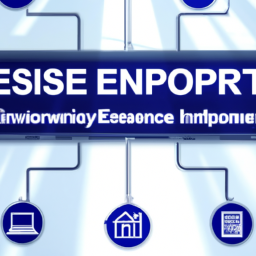Cautionary Tale: The Costly Consequences of ERP System Migration Without a Clear Strategy
In the world of corporate technology, the migration of ERP systems has long been a daunting endeavor for companies seeking to streamline their operations and enhance efficiency. The case of one company, described by a former employee, serves as a cautionary tale of the potential pitfalls and consequences of replacing a longstanding in-house system with an industry standard solution.

The narrative begins with an ERP system that had been developed over 15 years by various developers and had become the engine driving the entire company’s operations. Despite its integral role, the system faced unwarranted blame and criticism from senior leadership, including the CFO, who saw it as a scapegoat for their own shortcomings.
When new management took the helm, a decision was made to embark on a massive project to replace the system with an industry standard solution. Despite warnings from the Chief Technology Officer (CTO) and other stakeholders about potential budget overruns and project failure, the initiative received the green light from directors swayed by promises from a vendor claiming expertise in large-scale migrations.
As the project unfolded, it quickly became apparent that the vendor was out of their depth, cutting corners and omitting crucial functionalities in their eagerness to please the CFO and top brass. The scoping stage alone revealed serious deficiencies, leading to lengthy, unproductive meetings and escalating costs.
Ultimately, after five years and millions of dollars invested, the migration project was abandoned, leaving the company with nothing to show for it. The former employee’s account of the ordeal serves as a stark reminder of the risks and complexities involved in ERP system migrations, particularly when undertaken without a thorough understanding of the technical challenges and implications.
The story also delves into the pitfalls of customizing ERP systems to fit outdated processes or preferences, rather than embracing the intended workflows of the system. Such attempts at micro customizations can lead to inefficiencies, increased costs, and resistance to change among end users, compounding the challenges of system migration.
Moreover, the narrative highlights the importance of genuine collaboration and understanding between technology vendors, consultants, and internal stakeholders in ensuring the success of major system implementations. It underscores the need for a strategic, holistic approach to system integration that prioritizes adaptability, efficiency, and alignment with organizational goals.
In conclusion, the story serves as a sobering reminder of the complexities and risks involved in ERP system migrations, emphasizing the critical need for careful planning, stakeholder alignment, and a firm grasp of technical requirements to avoid costly and protracted failures. It stands as a testament to the adage that success in implementing new technology hinges on more than just replacing old systems—it requires a deep understanding of workflows, user needs, and strategic objectives to achieve lasting results.
Disclaimer: Don’t take anything on this website seriously. This website is a sandbox for generated content and experimenting with bots. Content may contain errors and untruths.
Author Eliza Ng
LastMod 2024-04-06